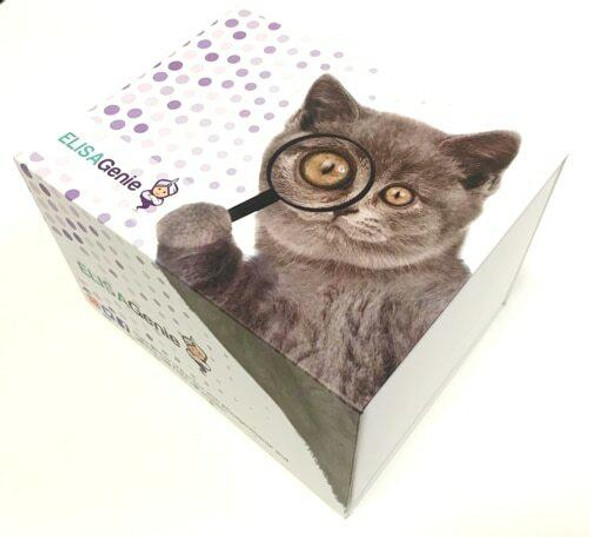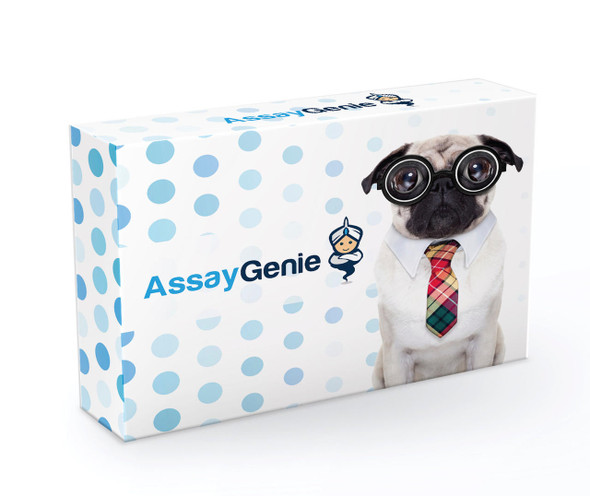Description
Rat Follicle-Stimulating Hormone/FSH ELISA Kit
The Rat Follicle Stimulating Hormone (FSH) ELISA Kit is specifically designed for the accurate measurement of FSH levels in rat serum, plasma, and cell culture supernatants. This kit offers high sensitivity and specificity, ensuring precise and reliable results for various research applications.FSH is an important hormone that plays a key role in the regulation of reproductive processes in both males and females. It is essential for the growth and development of ovarian follicles in females and sperm production in males.
Abnormal levels of FSH have been associated with infertility, polycystic ovary syndrome, and other reproductive disorders, making it a valuable biomarker for studying these conditions and developing potential treatments.With its easy-to-use format and reliable performance, the Rat FSH ELISA Kit is an essential tool for researchers looking to investigate the role of FSH in reproductive health and fertility in rat models.
| Product Name: | Rat Follicle-Stimulating Hormone/FSH ELISA Kit |
| Product Code: | RTFI00783 |
| Size: | 96 Assays |
| Target: | Rat FSH |
| Alias: | FSH, Follicle-Stimulating Hormone |
| Reactivity: | Rat |
| Detection Method: | Competitive ELISA, Coated with Antibody |
| Sensitivity: | 1.406mIU/ml |
| Range: | 2.344-150mIU/ml |
| Storage: | 4°C for 6 months |
| Note: | For Research Use Only |
| Recovery: | Matrices listed below were spiked with certain level of Rat FSH and the recovery rates were calculated by comparing the measured value to the expected amount of Rat FSH in samples. | ||||||||||||||||
| |||||||||||||||||
| Linearity: | The linearity of the kit was assayed by testing samples spiked with appropriate concentration of Rat FSH and their serial dilutions. The results were demonstrated by the percentage of calculated concentration to the expected. | ||||||||||||||||
| |||||||||||||||||
| Intra-Assay: | CV <8% | ||||||||||||||||
| Inter-Assay: | CV <10% |
| Uniprot: | P20395 |
| UniProt Protein Function: | FSHR: Receptor for follicle-stimulating hormone. The activity of this receptor is mediated by G proteins which activate adenylate cyclase. Defects in FSHR are a cause of ovarian dysgenesis type 1 (ODG1); also known as premature ovarian failure or gonadal dysgenesis XX type or XX gonadal dysgenesis (XXGD) or hereditary hypergonadotropic ovarian failure or hypergonadotropic ovarian dysgenesis with normal karyotype. ODG1 is an autosomal recessive disease characterized by primary amenorrhea, variable development of secondary sex characteristics, and high serum levels of follicle-stimulating hormone (FSH) and luteinizing hormone (LH). Defects in FSHR are a cause of ovarian hyperstimulation syndrome (OHSS). OHSS is a disorder which occurs either spontaneously or most often as an iatrogenic complication of ovarian stimulation treatments for in vitro fertilization. The clinical manifestations vary from abdominal distention and discomfort to potentially life-threatening, massive ovarian enlargement and capillary leak with fluid sequestration. Pathologic features of this syndrome include the presence of multiple serous and hemorrhagic follicular cysts lined by luteinized cells, a condition called hyperreactio luteinalis. Belongs to the G-protein coupled receptor 1 family. FSH/LSH/TSH subfamily. 3 isoforms of the human protein are produced by alternative splicing. |
| UniProt Protein Details: | Protein type:Membrane protein, multi-pass; GPCR, family 1; Membrane protein, integral; Receptor, GPCR Cellular Component: cell surface; endosome; integral to plasma membrane Molecular Function:follicle-stimulating hormone receptor activity; G-protein coupled receptor activity; peptide hormone binding; peptide receptor activity, G-protein coupled; protein binding Biological Process: adenylate cyclase activation; cellular water homeostasis; follicle-stimulating hormone signaling pathway; G-protein signaling, adenylate cyclase activating pathway; G-protein signaling, adenylate cyclase inhibiting pathway; G-protein signaling, coupled to cAMP nucleotide second messenger; G-protein signaling, coupled to IP3 second messenger (phospholipase C activating); hormone-mediated signaling; locomotory behavior; male gonad development; negative regulation of bone resorption; neurite development; ovarian follicle development; ovulation cycle process; positive regulation of estrogen receptor signaling pathway; positive regulation of phosphoinositide 3-kinase cascade; primary ovarian follicle growth; regulation of chromosome organization and biogenesis; regulation of estrogen receptor signaling pathway; regulation of hormone metabolic process; regulation of MAPKKK cascade; regulation of osteoclast differentiation; regulation of protein amino acid phosphorylation; regulation of systemic arterial blood pressure; Sertoli cell development; Sertoli cell proliferation; sperm chromatin condensation; spermatid development; spermatogenesis; spermatogenesis, exchange of chromosomal proteins; transcytosis; uterus development |
| NCBI Summary: | testicular receptor for follicle stimulating hormone; stimulates adenylyl cyclase activity [RGD, Feb 2006] |
| UniProt Code: | P20395 |
| NCBI GenInfo Identifier: | 40385885 |
| NCBI Gene ID: | 25449 |
| NCBI Accession: | NP_954707.1 |
| UniProt Secondary Accession: | P20395,Q64183, |
| UniProt Related Accession: | P20395 |
| Molecular Weight: | 77,681 Da |
| NCBI Full Name: | follicle-stimulating hormone receptor |
| NCBI Synonym Full Names: | follicle stimulating hormone receptor |
| NCBI Official Symbol: | Fshr |
| NCBI Protein Information: | follicle-stimulating hormone receptor |
| UniProt Protein Name: | Follicle-stimulating hormone receptor |
| UniProt Synonym Protein Names: | Follitropin receptor |
| Protein Family: | Follicle-stimulating hormone receptor |
| UniProt Gene Name: | Fshr |
| UniProt Entry Name: | FSHR_RAT |
| Step | Procedure |
| 1. | Set standard, test sample and control (zero) wells on the pre-coated plate respectively, and then, record their positions. It is recommended to measure each standard and sample in duplicate. Wash plate 2 times before adding standard, sample and control (zero) wells! |
| 2. | Add Sample and Biotin-detection antibody: Add 50µL of Standard, Blank or Sample per well. The blank well is added with Sample Dilution Buffer. Immediately add 50 µL of biotin-labelled antibody working solution to each well. Cover with the plate sealer provided. Gently tap the plate to ensure thorough mixing. Incubate for 45 minutes at 37°C. (Solutions are added to the bottom of micro-ELISA plate well, avoid touching plate walls and foaming). |
| 3. | Wash: Aspirate each well and wash, repeating the process three times. Wash by filling each well with Wash Buffer (approximately 350µL) using a squirt bottle, multi-channel pipette, manifold dispenser or automated washer. Complete removal of liquid at each step is essential to good performance. After the last wash, remove any remaining Wash Buffer by aspirating or decanting. Invert the plate and pat it against thick clean absorbent paper. |
| 4. | HRP-Streptavidin Conjugate(SABC): Add 100µL of SABC working solution to each well. Cover with a new Plate sealer. Incubate for 30 minutes at 37°C. |
| 5. | Wash: Repeat the aspiration/wash process for five times. |
| 6. | TMB Substrate: Add 90µL of TMB Substrate to each well. Cover with a new plate sealer. Incubate for about 10-20 minutes at 37°C. Protect from light. The reaction time can be shortened or extended according to the actual color change, but not more than 30 minutes. When apparent gradient appeared in standard wells, you can terminate the reaction. |
| 7. | Stop: Add 50µL of Stop Solution to each well. Color turn to yellow immediately. The adding order of stop solution should be as the same as the substrate solution. |
| 8. | OD Measurement: Determine the optical density (OD Value) of each well at once, using a microplate reader set to 450 nm. You should open the microplate reader ahead, preheat the instrument, and set the testing parameters. |
When carrying out an ELISA assay it is important to prepare your samples in order to achieve the best possible results. Below we have a list of procedures for the preparation of samples for different sample types.
| Sample Type | Protocol |
| Serum: | If using serum separator tubes, allow samples to clot for 30 minutes at room temperature. Centrifuge for 10 minutes at 1,000x g. Collect the serum fraction and assay promptly or aliquot and store the samples at -80°C. Avoid multiple freeze-thaw cycles. If serum separator tubes are not being used, allow samples to clotovernight at 2-8°C. Centrifuge for 10 minutes at 1,000x g. Removeserum and assay promptly or aliquot and store the samples at-80°C. Avoid multiple freeze-thaw cycles. |
| Plasma: | Collect plasma using EDTA or heparin as an anti-coagulant. Centrifuge samples at 4°C for 15 mins at 1000 - g within 30 mins of collection. Collect the plasma fraction and assay promptly or aliquot and store the samples at -80°C. Avoid multiple freeze-thaw cycles.Note: Over haemolysed samples are not suitable for use with this kit. |
| Urine & Cerebrospinal Fluid: | Collect the urine (mid-stream) in a sterile container, centrifuge for 20 mins at 2000-3000 rpm. Remove supernatant and assay immediately. If any precipitation is detected, repeat the centrifugation step. A similar protocol can be used for cerebrospinal fluid. |
| Cell Culture Supernatant: | Collect the cell culture media by pipette, followed by centrifugation at 4°C for 20 mins at 1500 rpm. Collect the clear supernatant and assay immediately. |
| Cell Lysates: | Solubilize cells in lysis buffer and allow to sit on ice for 30 minutes. Centrifuge tubes at 14,000 x g for 5 minutes to remove insoluble material. Aliquot the supernatant into a new tube and discard the remaining whole cell extract. Quantify total protein concentration using a total protein assay. Assay immediately or aliquot and store at ≤ -20°C. |
| Tissue Homogenates: | The preparation of tissue homogenates will vary depending upon tissue type. Rinse tissue with 1X PBS to remove excess blood & homogenizein 20ml of 1X PBS (including protease inhibitors) and store overnight at ≤ -20°C. Two freeze-thaw cycles are required to break the cell membranes. To further disrupt the cell membranes you can sonicate the samples. Centrifuge homogenates for 5 mins at 5000xg. Remove the supernatant and assay immediately or aliquot and store at -20°C or-80°C. |
| Tissue Lysates: | Rinse tissue with PBS, cut into 1-2 mm pieces, and homogenize with a tissue homogenizer in PBS. Add an equal volume of RIPA buffer containing protease inhibitors and lyse tissues at room temperature for 30 minutes with gentle agitation. Centrifuge to remove debris. Quantify total protein concentration using a total protein assay. Assay immediately or aliquot and store at ≤ -20 °C. |
| Breast Milk: | Collect milk samples and centrifuge at 10,000 x g for 60 min at 4°C. Aliquot the supernatant and assay. For long term use, store samples at -80°C. Minimize freeze/thaw cycles. |






